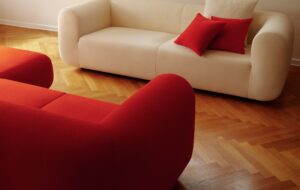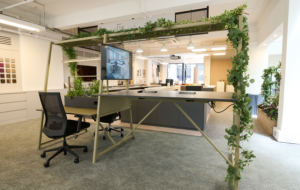

words Justin McGuirk
An exhibition in Tel Aviv of art from Northern Ireland explores how the urban landscape can be defined by and read through a conflict. But it’s the context that makes this show so interesting.
Walls, checkpoints, gated communities – segregation and paranoia. These are the natural delineators of the Israeli landscape. Driving through Jerusalem, it becomes almost like a game trying to figure out where the Israeli capital ends and Palestine begins. Sometimes there’s the wall, but then it disappears, leaving just the road you’re on to mark a border that is as invisible to visitors as it is conspicuous to residents.
Political commentators might find it fatuous to draw too many parallels between the conflict in Israel/Palestine and the one in Northern Ireland. Yet their traces on Jerusalem and Belfast are palpably similar, not just physically – in walls and fences – but in the inhabitants’ psychological and territorial readings of those cities. And so this exhibition of work by young artists from Northern Ireland at Israel’s foremost contemporary art space, the Herzliya Museum outside Tel Aviv, takes on a rather powerful resonance. The work confirms for a primed audience how even a city’s most innocuous features can be read politically, and charts a landscape in which orientation is a matter of self-preservation.
Driving around Israel or the West Bank you quickly become attuned to the local iconography. The neat arrangements of red pitched roofs and green lawns – an American model of ex-urbia – are settlements, isolated but economically aloof compared to the Arab towns. I was instantly reminded of them by John Duncan’s photograph of a gated suburban development in Belfast, with its toy-town, pitched-roof vernacular. Duncan’s series, Trees from Germany, documents the continuing gentrification of the city. He makes tree-planting schemes and twee housing developments feel like a finger plaster compared to the city’s derelict lots, walled-off roads and brutish architecture. He also makes us reconsider whether living in a gated community is such a privilege, when whole sections of Belfast are fenced off from each other.
Duncan’s city, though, is a complex thing infused with social and economic values, whereas Miriam de Búrca has reduced it to a single symbol. Her Super-8 film Go Home captures a claustrophobic road between two “peace walls”. The interesting thing about these walls, as opposed to the eight vertical metres of concrete that divide Israeli and Palestinian communities, is that for the people on either side of them they were never quite divisive enough. They have been made higher, sometimes with two extra levels of fencing. The extensions are like geological strata representing recent periods of an atavistic hatred.
But little of the work in this exhibition is so easily read. An outsider wouldn’t necessarily get the sectarian symbolism of Aisling O’Beirn’s mock-architectural models. Her cardboard cranes, Samson and Goliath, could just be a quaint comment on the industrial skyline, except that they embody the bygone glory of the predominantly Protestant shipyards. Though redundant now, the cranes have been bought by the city because they were too symbolic a landmark to be dismantled.
This same narrative runs through Peter Richards’ pin-hole photographs of local memorials. The starkly polarised prints heighten the ambivalent readings of community memorials, whether wilting flowers tied to a lamppost or a monument to the Titanic. How does one interpret the latter, when the ship was the glory of the Protestant shipyards but, from the local population, would have carried mainly Catholics?
Significantly, the artists in this show are willing to work within and be read in the light of the conflict. This is not the case for Israeli artists, many of whom, according to curator Sergio Edelsztein, reject such a prescriptive reading of their work.
Ian Charlesworth’s appropriation of the paramilitary graffiti branded with lighters onto the ceilings of pub toilets is only too plainly addressing the territorial demarcations that, when transgressed, can result in violence. But Mary McIntyre’s landscape photographs, which can be read simply as a modern, sinister reinterpretation of the Romantics and the sublime, take on added connotations in the context of Israeli and Northern Irish politics. In that light, only violence can lurk round a dark and leafy bend.
This exhibition is not, overtly anyway, about making comparisons between Israel and Northern Ireland. It has been described as the most significant exhibition of Northern Irish art abroad, but the fact that it has been brought here is because of the resonance it will have for an Israeli audience. What it does successfully is address the details on the ground that affect people’s lives so much more than the rhetoric. With new political progress inching forward in both places, this exhibition transcends merely parochial concerns and sticks a pin in the kind of myth-making that goes with the creation of “homelands”. The obvious but unavoidable caveat with the show is that, since you won’t find many Palestinians in Herzliya, it is only for one half of the audience.
The Belfast Way is at the Herzliya Museum through May















